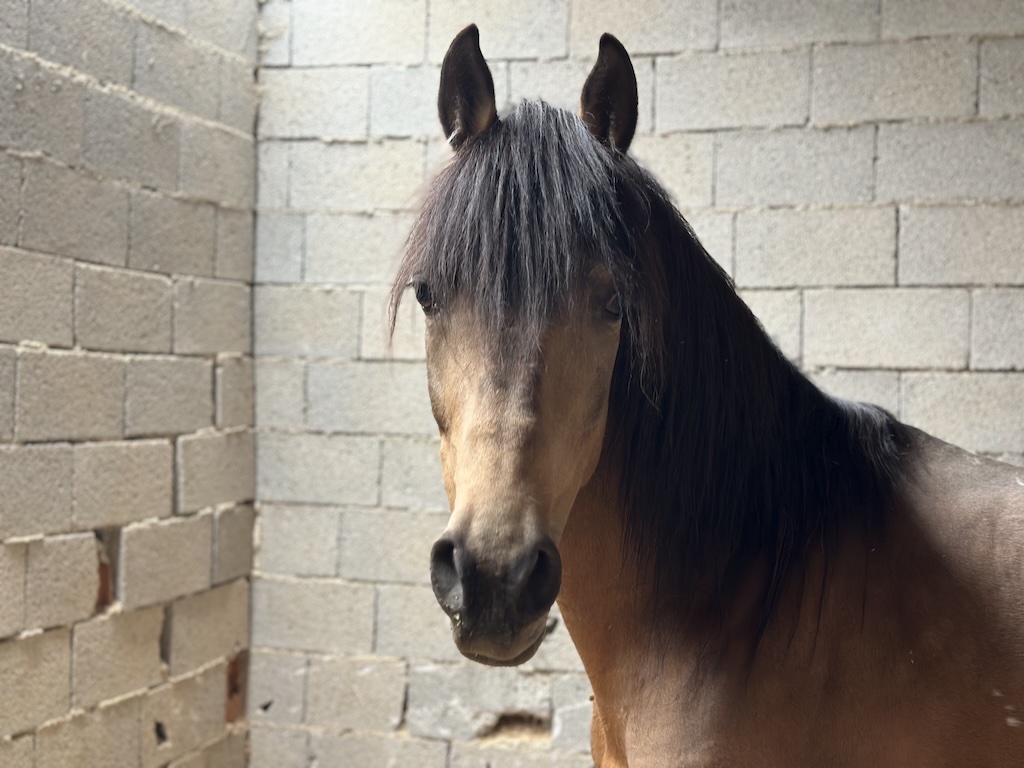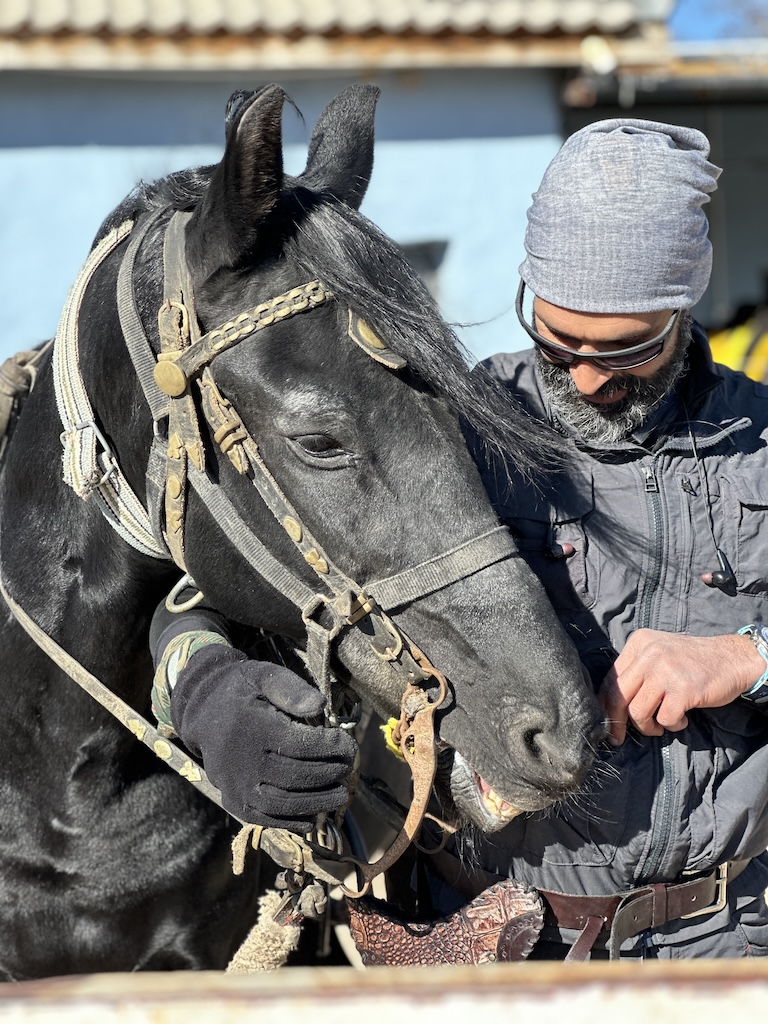
Rahvan Horses: The Unseen Workhorses of the Farm , Why They’re Not What You Think
Oct 21, 2025
“Not every horse is right for everyone. But when you find the one that speaks to you… it changes everything.”
I first met a Rahvan at a roadside stable in central Turkey, dusty, wide-eyed, and restless. He wasn’t mine. I hadn’t even meant to stop. But when I saw him, tethered beside a rusted gate, ears pinned back like he’d been through fire, something in me froze.
He wasn’t wild. Not exactly. But he was broken.
His gait, smooth, fluid, almost hypnotic, wasn’t grace. It was survival. A rhythm forged in neglect, shaped by riders who didn’t know how to listen.
That horse? He’s now one of the Rahvans we keep on our farm, not for sport, not for pride, but because they work.
And in doing so, they teach us what real horsemanship looks like.
The Rahvan Paradox: Gentle on the Surface, Storm Beneath
They’re often called “easy to ride” horses, perfect for beginners, children with autism, veterans with PTSD. No seat required. No balance needed. Just sit. Breathe. Let the amble carry you.
But here’s the truth no one tells you: accessibility isn’t innocence.
Rahvans are not pets.
They’re not ponies.
They’re not soft or passive.
They’re sensitive, intelligent, and deeply reactive, a product of centuries of selective breeding for endurance, speed, and smooth movement. Their calm exterior hides a nervous system wired for survival. When mistreated, they remember. When abandoned, they withdraw. And when pushed too far? They snap.
This isn’t aggression, it’s defense.
We’ve seen local Yerli Rahvans rear at the sound of a door closing. Others, like the massive Bulgar Rahvan from Bulgaria, bigger than many Arabians, stand motionless until you approach slowly, speak low, and let them choose.
But once trust is earned?
They move like silk over stone.
Temperament Under the Saddle: More Than Just a Smooth Gait

Let’s be clear: the rahvan gait is not magic. It’s biomechanics. It’s evolution.
It’s a four-beat lateral gait, legs on one side move together before the other, making it faster than a walk, smoother than a trot, and far less jarring than most gaits. That’s why travelers and messengers used them for centuries. They could cover 50+ km without tiring the rider.
But this gait demands more than just physical fitness. It demands emotional stability from the rider.
- If you’re tense, he feels it.
- If you rush, he resists.
- If you’re inconsistent, he shuts down.
Rahvans don’t tolerate chaos. They thrive on rhythm, repetition, and clarity. They’re creatures of discipline, just like their human partners.
Pro tip: If your Rahvan suddenly starts tail-swishing, head-tossing, or pulling left/right, check yourself first. The problem isn’t the horse. It’s the rider.
Breeds & Bloodlines: From Anatolia to the Balkans
There’s no single "Rahvan." There are many, each with its own history, size, and temperament.
🇹🇷 Local Rahvan (Yerli Rahvan)
- Height: 13.1–13.3 height
- Build: Lean, athletic, compact
- Temperament: Sharp, alert, cautious
- Origin: Central Anatolia
- Best for: Therapy, trail rides, beginner riders
🇧🇬 Bulgar Rahvan
- Height: Up to 15.2 height
- Build: Massive, muscular, powerful
- Temperament: Calm but intense; needs experienced handling
- Origin: Bulgaria, influenced by Ottoman equestrian traditions
- Best for: Hippotherapy, long-distance riding, strength training
🇮🇷 Iranian & Georgian Sub-Breeds
- Coats: Often grey, bay, chestnut, black
- Traits: Smaller, sharper, more nervous
- History: Used in ancient festivals, village races, and military patrols
- Best for: Cultural events, heritage programs, equine-assisted therapy
These aren’t just breeds, they’re living archives of migration, war, trade, and survival.
Why Most Riders Don’t Ride Them (And Why That’s a Problem)
You’ll rarely see a Rahvan at a show ring. Not because they’re bad, because they’re misunderstood.
People prefer Thoroughbreds for speed. Arabians for beauty.
But Rahvans? They’re not flashy. They’re not loud. They’re not ego-driven.
They’re quiet teachers.
And that’s exactly why they’re perfect for:
- Hippotherapy – Their steady gait helps regulate nervous systems.
- Equine-assisted therapy – They mirror emotions, teaching self-awareness.
- Trail rides for visitors – No skill? No problem. Just sit and feel the rhythm.
- Children’s programs – Builds patience, responsibility, empathy.
They don’t care about ribbons.
They care about connection.
The Warning: This Horse Is Not a Toy
Yes, anyone can ride a Rahvan.
But that doesn’t mean they should.
They’re not forgiving.
They’re not mindless.
They’re not “just a horse.”
When mistreated, especially after being passed between owners, ridden too hard, or thrown into races without preparation, they can become dangerous. Not out of malice. Out of trauma.
Red flags to watch for:
- Ears pinned back
- Head tossing, tail swishing
- Refusing to walk forward
- Charging at sudden movements
- Aggression toward new people
If you see any of these, don’t blame the horse.
Blame the handler. Blame the system. Blame the lack of education.
Final Word: The Rahvan Isn’t About Riding. It’s About Becoming Better.
This isn’t a story about a breed.
It’s a story about truth.
In a world obsessed with trends, speed, and ego, the Rahvan reminds us:
Real strength isn’t in dominance.
It’s in listening.
In patience.
In humility.
When you ride one, you don’t command. You sync.
You learn to lead not by force, but by presence.
And in doing so, you grow.
Because if you’re not disciplined, you can’t ride.
If you’re not present, you can’t connect.
If you’re not willing to heal, you can’t help another heal.
So yes, we keep Rahvans on our farm.
Not for fame. Not for profit.
But because they teach us what it means to be better humans.
The promise isn’t to ride well.
It’s to become someone worth riding.
And that?
That’s the real journey.